The impossible triangle of city selection: "affordable prices," "convenient living," and "abundant development opportunities."
By Ruby Wang
For me, the biggest wish for 2023-2024 is to step out of the country and see the living conditions of local people in more places.
On the one hand, after more than three years at YQ, I feel out of sync with the world and not completely in sync online for a long time. When I was young, I almost traveled outside every holiday. As someone who wrote hitchhiking and hiking travel notes ten years ago and obtained an AOW diving certificate to see sunken ships, not traveling for four years was quite difficult. So this year, I decided to fight back in a retaliatory manner.
Ironically, as soon as my daughter was able to sit up straight after her birth, I got her a passport, hoping that she could travel with us from the age of 1. As a result, the passport, which was valid for 5 years, now only has 1 year left.
On the other hand, I hope that while we are still young (clearly struggling in middle age…), our family can experience life in different places, and the children can grow up naturally in a multicultural environment, free from intense competition.
The long-term living requirements of a family and the needs of a "digital nomad" as a single young person are quite different. For example, considering children's education and elderly medical care, living in the countryside or on an island is basically ruled out. So our list of considerations is more about choosing cities where we can accept long-term living, rather than countries.
After visiting the western United States in the middle of the year, it became even clearer that in the coming years, the work or market opportunities for non-technical Chinese internet professionals should still be concentrated in the Asia-Pacific region. Therefore, major cities in Japan, Southeast Asia, Hong Kong, and Australia and New Zealand are more in line with our considerations.
Because I took my daughter to Japan to play during the summer vacation, this time we simply chose to visit two major cities/countries for 10 days, Kuala Lumpur and Singapore, to visit old and new friends and to investigate the living and educational environment.
After returning, familiar friends have been urging me to summarize our trip. In this article, I will first introduce the status of these friends in Singapore and Malaysia (visas, work, life, and children's education), and finally, I will share my conclusions and feelings.
As we have been working in the internet industry for more than 10 years, these friends come from major companies such as ByteDance, Alibaba, Shopee, and Meituan, or are involved in Web3 & AI startups. We do not want to disturb their lives, so we will describe them using code names as much as possible.
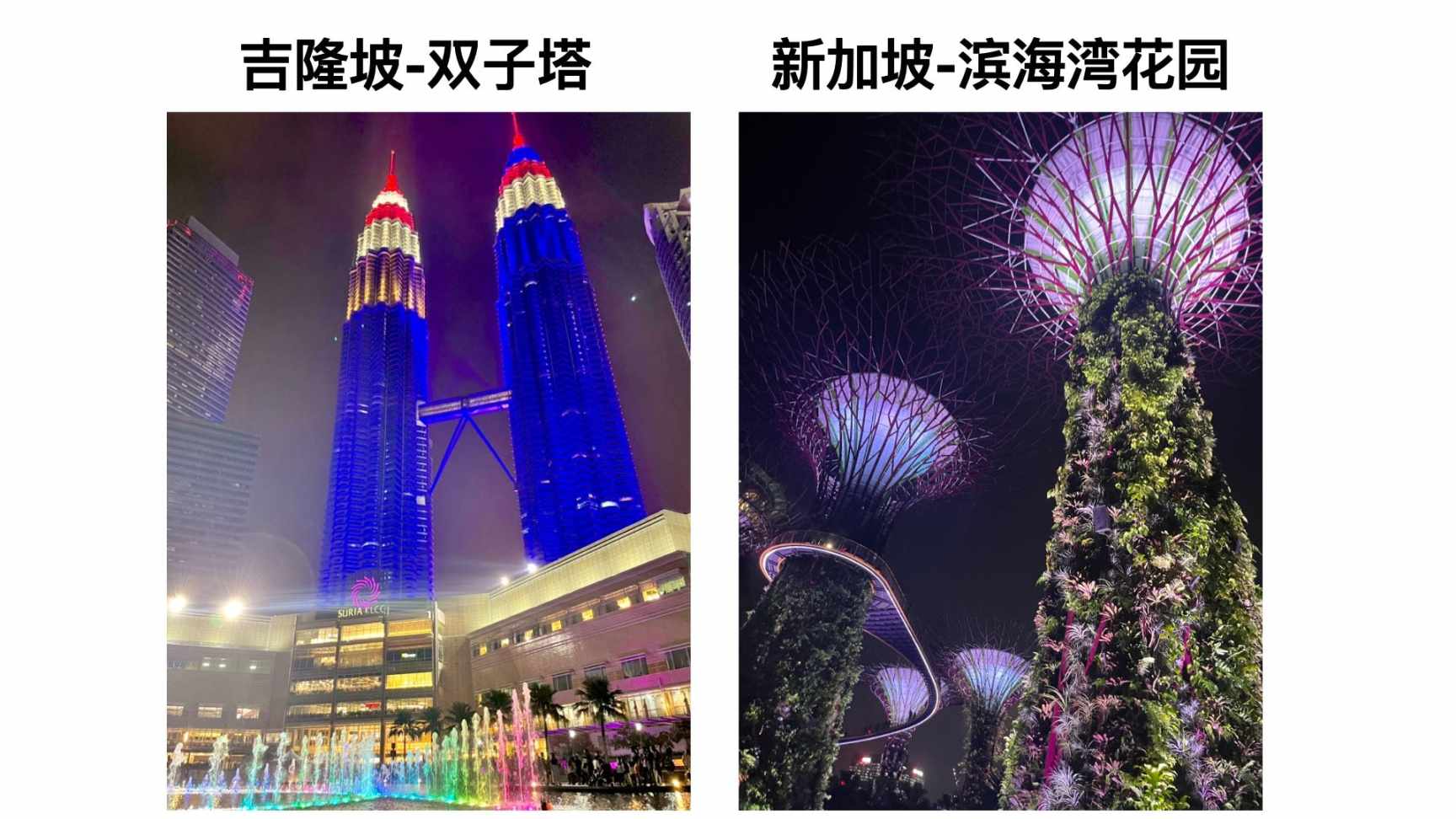
Y Mr.@Kuala Lumpur
Y Mr. worked for a certain Web2 major company for many years before retiring semi-retired through property investment FIRE. Four years ago, he resigned and settled in Kuala Lumpur through Malaysia's second home visa, now living near Cyberjaya.
Because I added Y Mr. on WeChat very early, I knew that both of his sons are studying in Kuala Lumpur, so this time, I specifically asked for his advice on schools during the visit. Y Mr. recommended that we visit the living areas around his home. So we took a Grab and arrived at his quiet neighborhood near Cyberjaya, about 40 minutes from the Petronas Twin Towers.
Cyberjaya, Jaya means city, so it is a network city, belonging to the location of the technology city that Malaysia wants to build. Cyberjaya is located near Putrajaya, both of which are 40-50 kilometers south of Kuala Lumpur city center, between the city and the airport. Putrajaya is the seat of the Malaysian government. During Mahathir's era, hundreds of billions were invested to build modern buildings and many parks, so many officials live nearby. The Pink Mosque we often visit as tourists is located in Putrajaya.
Y Mr. has a top-notch school district house in China, but after his child reached the second grade, he found that he could no longer adapt to the education system. He sold the school district house, investigated Thailand, Canada, and Malaysia, and finally chose Kuala Lumpur. He originally wanted to use this place as a transit station and then move the whole family to Canada. However, the weather here is warm, and both the children and the elderly adapted well after coming here. He did not have a strong desire to immigrate, so he no longer has the motivation to go to Canada. He has not yet invested in property in Malaysia and rents a two-story, 300-square-meter villa with a yard and two parking spaces for 10,000 RMB per month. His children go to an international school 10 minutes away by car. There are abundant outdoor resources for weekend activities, with large parks and lakes nearby. It takes an hour to drive to the seaside and half an hour to the airport. Relying on Kuala Lumpur as the headquarters of AirAsia, round-trip tickets to various islands in Southeast Asia cost about 1,000 RMB, and there are direct flights to major cities in China.
After visiting their home, Y Mr. drove us to nearby schools, hospitals, and attractions, and finally to the largest shopping mall in Putrajaya, IOI City Mall. We had a meal at a Balinese-style restaurant. It happened to be the weekend, and the mall was very lively, with a strong sense of life.
The living status of Y Mr. and his family is the most enviable among our friends on this trip. After doing the math, a family of four can live comfortably and leisurely here for 400,000 to 500,000 RMB a year, and they are all satisfied with education and medical care. Of course, the premise is to have a stable cash flow from business or investment income, as the long-term visa for the second home does not allow work in Malaysia.
We originally planned to meet another friend who had moved his entire family to Malaysia for web3 entrepreneurship. As a result, it was the Mid-Autumn Festival, and he went to Penang to accompany his family. By the way, in addition to Kuala Lumpur, many Chinese people also move to Penang and Johor Bahru. We agreed to visit again next time and meet then.
Putrajaya: Next to the Pink Mosque
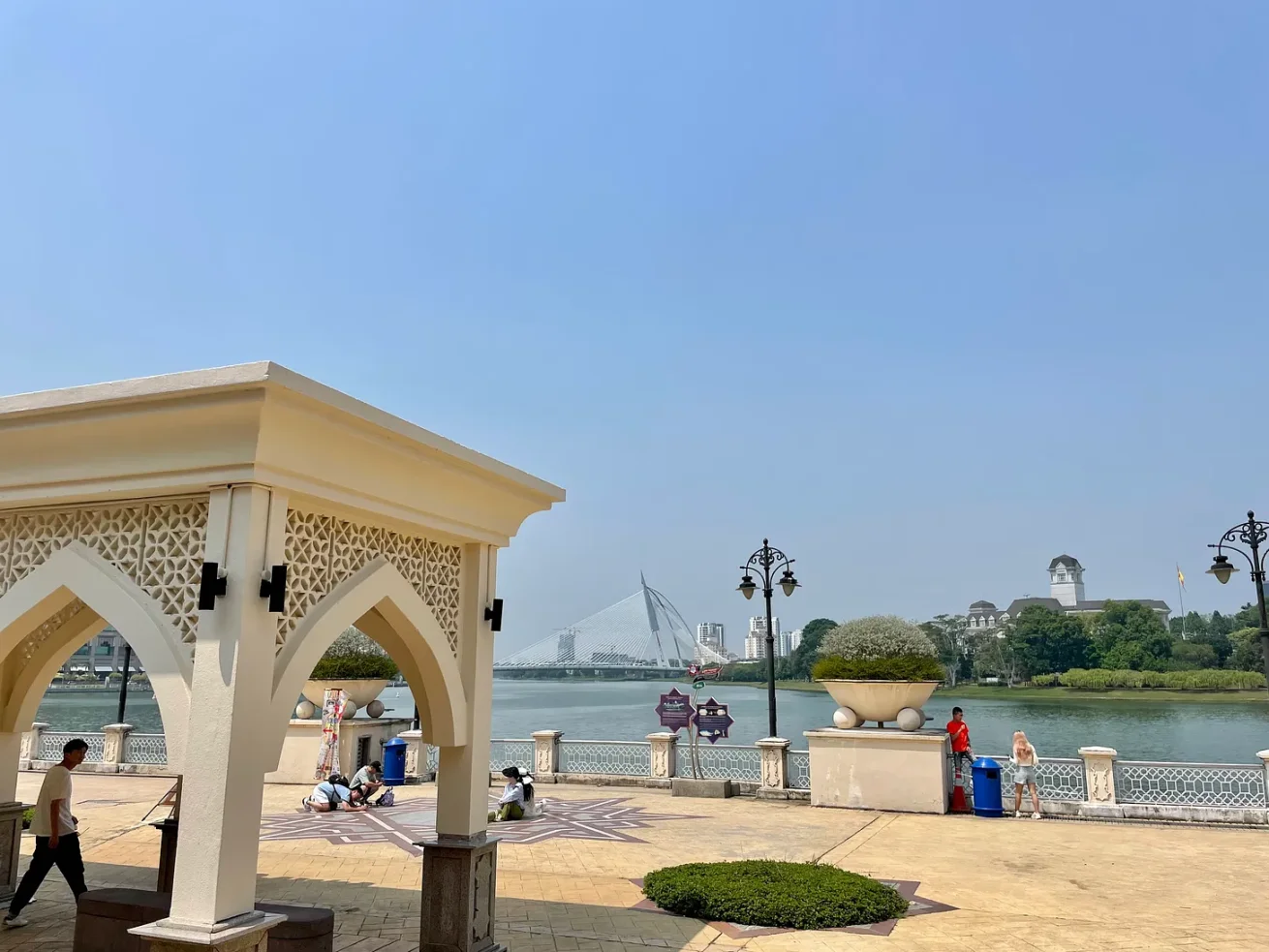
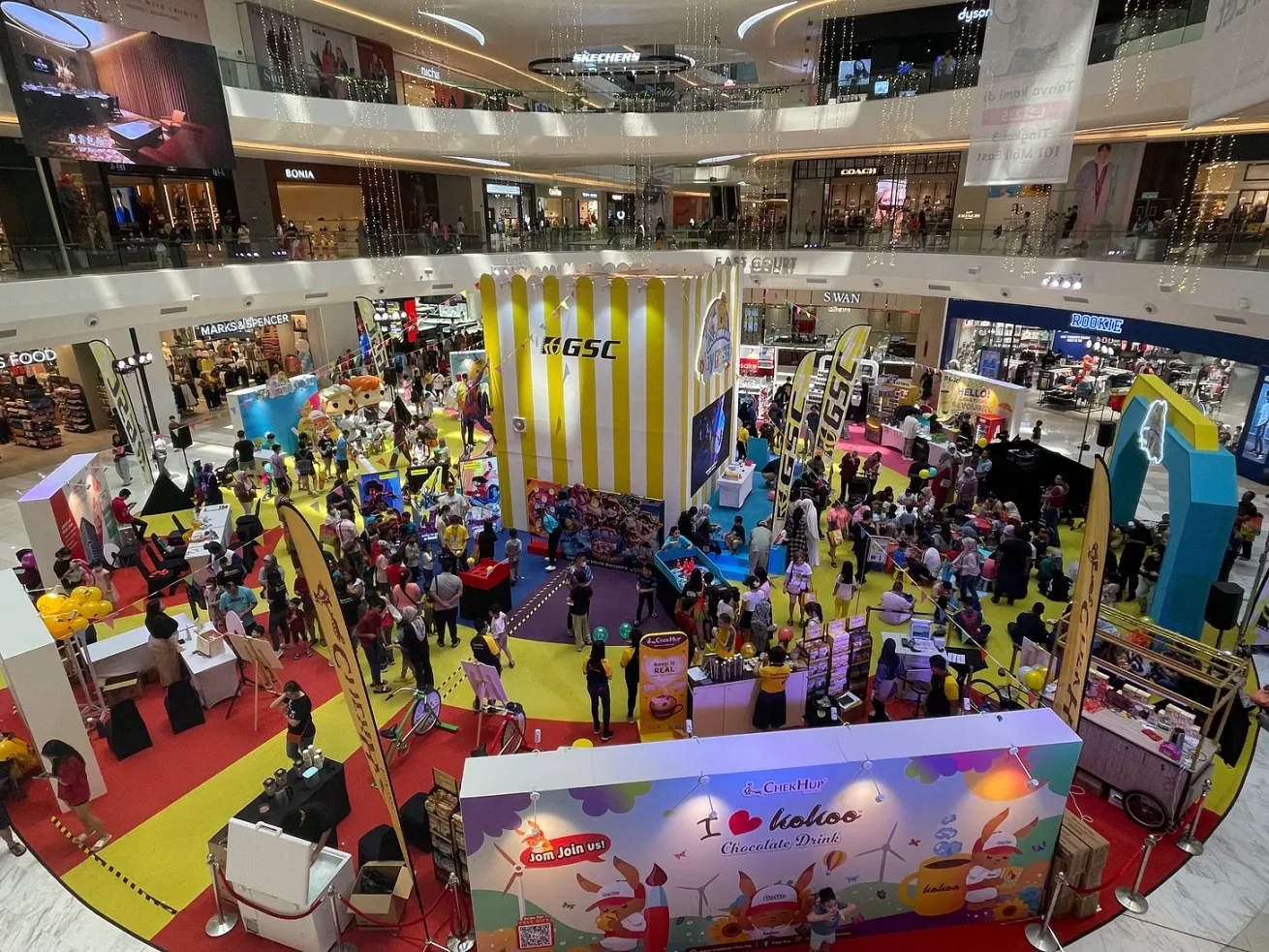
G Ms.@Singapore
G Ms. escaped the intense competition in the domestic internet company three years ago and switched to a product manager at a certain Southeast Asian web2 company. We all think her timing is really unbeatable. In the past two years, it has become increasingly difficult to obtain a work visa (EP) in Singapore, and G Ms. has been queuing for permanent residency after working steadily for three years and taking maternity leave after having a baby.
We also saw her cute baby of about 1 year old at her home. Since having a baby, she has hired a Filipino maid, and due to the sharp rise in rent in Singapore in the past two years, she moved from the apartment she originally rented to the current three-bedroom HDB (government-built ancestral home). The rent for this 100-square-meter area is quite acceptable. There is a subway station and bus stop 20 meters outside the community, and there are 24-hour supermarkets and many places to eat downstairs. It is really convenient to have an ancestral home in Singapore. Since coming to Singapore to escape the intense competition in the domestic internet industry and to have a baby, it seems that work can end at 6-7 o'clock, and it really is "not intense." The environment for raising children is also reassuring. After all, where can a child abductor go in this place?
In addition, she also admitted that boredom is a real issue, and the lack of creativity in the work environment may also be a product of a rule-based society. So we also discussed whether children growing up would hope to receive local elite and rule-based education. There is still no answer for now.
J Mr.@Singapore
More than a year ago, J Mr. changed jobs and came to a certain web2 major company in Singapore. His two sons were also in a certain IB international school in China. Out of a higher pursuit of career development and the quality of international education, they applied to the top-notch UWC (United World College of Southeast Asia), and now both children are studying there. Coincidentally, the second son was training for soccer at the school on the weekend morning, so we made an appointment to visit the old campus of UWC Dover.
This time, I visited a total of 4 international schools, and of course, the facilities are beyond words, and the conditions can even match those of many universities. However, what impressed me most about UWC was its cafeteria and sports facilities. The cafeteria is an open space similar to a Singaporean food court, like a large food court in a mall, with global cuisine and beverage counters that are made to order, and the satisfaction with the food is very high. Another thing is the emphasis on sports. Many people are exercising on the weekends, from soccer and taekwondo to water ballet in the swimming pool. Not only the children, but the parents also hire coaches to train. In Singapore's 30-degree weather, we were tired after walking for an hour, but the little boy training in soccer didn't want to go home even after running for more than two hours. It's really admirable how much physical strength it takes to be elite, starting with physical strength!
UWC, formerly known as the Singapore International School. Left picture: a photo of Lee Kuan Yew unveiling the plaque is still on the wall of the school's café; Right picture: a corner of the soccer field during weekend training, playing and not wanting to go home
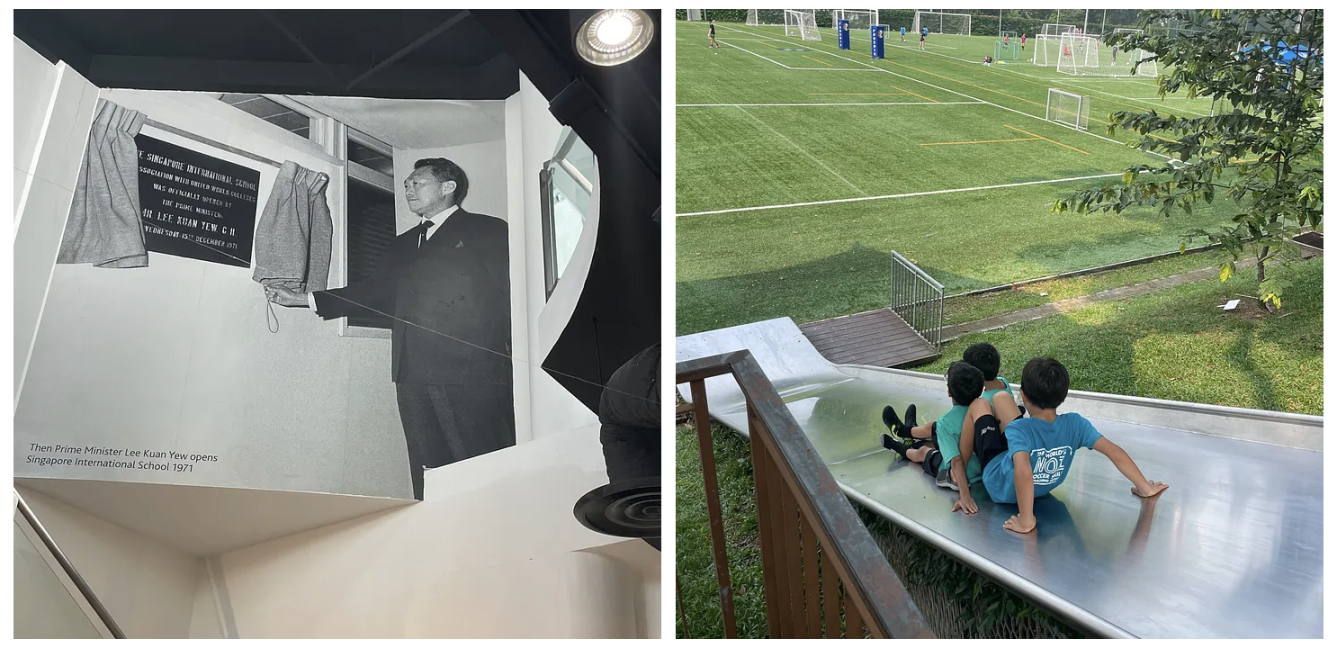
Mr. W@Singapore
I originally met Mr. W and his family in a group chat. My information about international schools in Singapore basically came from Mrs. L, Mr. W's wife. As a former Shunyi mom, during my time at YQ, I was determined to take my two daughters abroad. Mrs. L and Mr. W are one of the most proactive families I have ever met. Mr. W used to be a technical leader at a major company in China. Before he even confirmed the offer in Singapore, Mrs. L had already applied for a kindergarten and brought their two daughters over to settle in. At that time, I also applied for the same kindergarten for my daughter with Mrs. L, but when we met this time, their child had changed schools several times, while I hadn't even made a move… That's the difference.
We visited the apartment they rented. They described it as living in the "suburbs of Singapore," but life is quite convenient. The residents of the apartment can barbecue in the public area, have pool parties, and the children's play area is also quite large. There is also a large area of HDB ancestral homes near the apartment, and the open fitness area and rated restaurants of the ancestral homes are within walking distance. After dinner, the children played together for a long time. The playground had children from different countries showing off their skills to each other, looking like a small United Nations.
Mrs. L is very satisfied with the environment for raising children in Singapore because there are really many facilities and parks for children to play. But at the same time, the high cost of living and the pressure are also very real. "All daily items are bought on Taobao," and it's not known how long the international school for the two children can be sustained, after all, the tuition fees are still too high. In the future, if possible, they may transfer to a government school.
Typical apartment building and community swimming pool, daughters and friends' daughters playing in the community playground
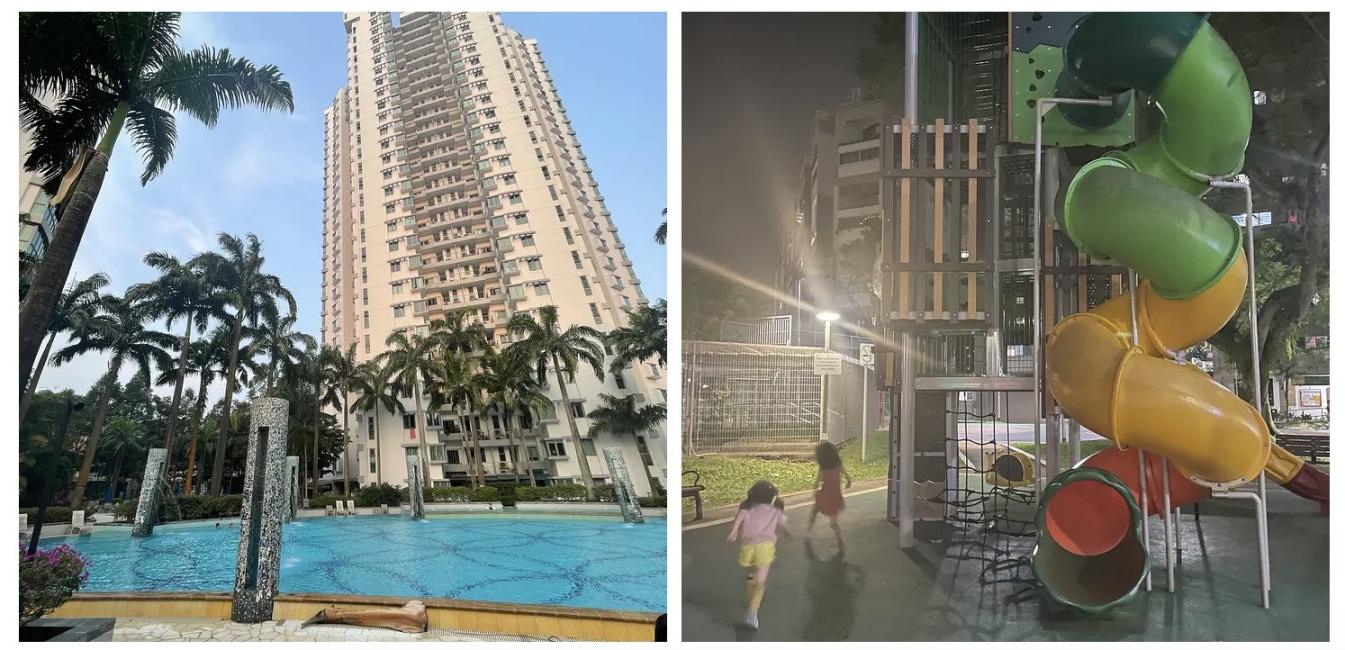
Ms. K and Mr. T@Singapore
In addition to visiting some old colleagues and friends from internet companies, I was also happy to meet a friend I met through X and web3 in Singapore!
I met Kelly from our web3 brand reader group at an izakaya. Kelly is currently working in product at an AI company and is also starting her own business to provide services for brands. She graduated from a university in the United States and has been in Singapore for about 5 years since returning from Silicon Valley. Although she often feels bored, she didn't think of anywhere better to stay! Haha, this really sums up the status of many friends living in Singapore—high safety and convenience have dispelled everyone's complaints about boredom.
Cheers with Kelly
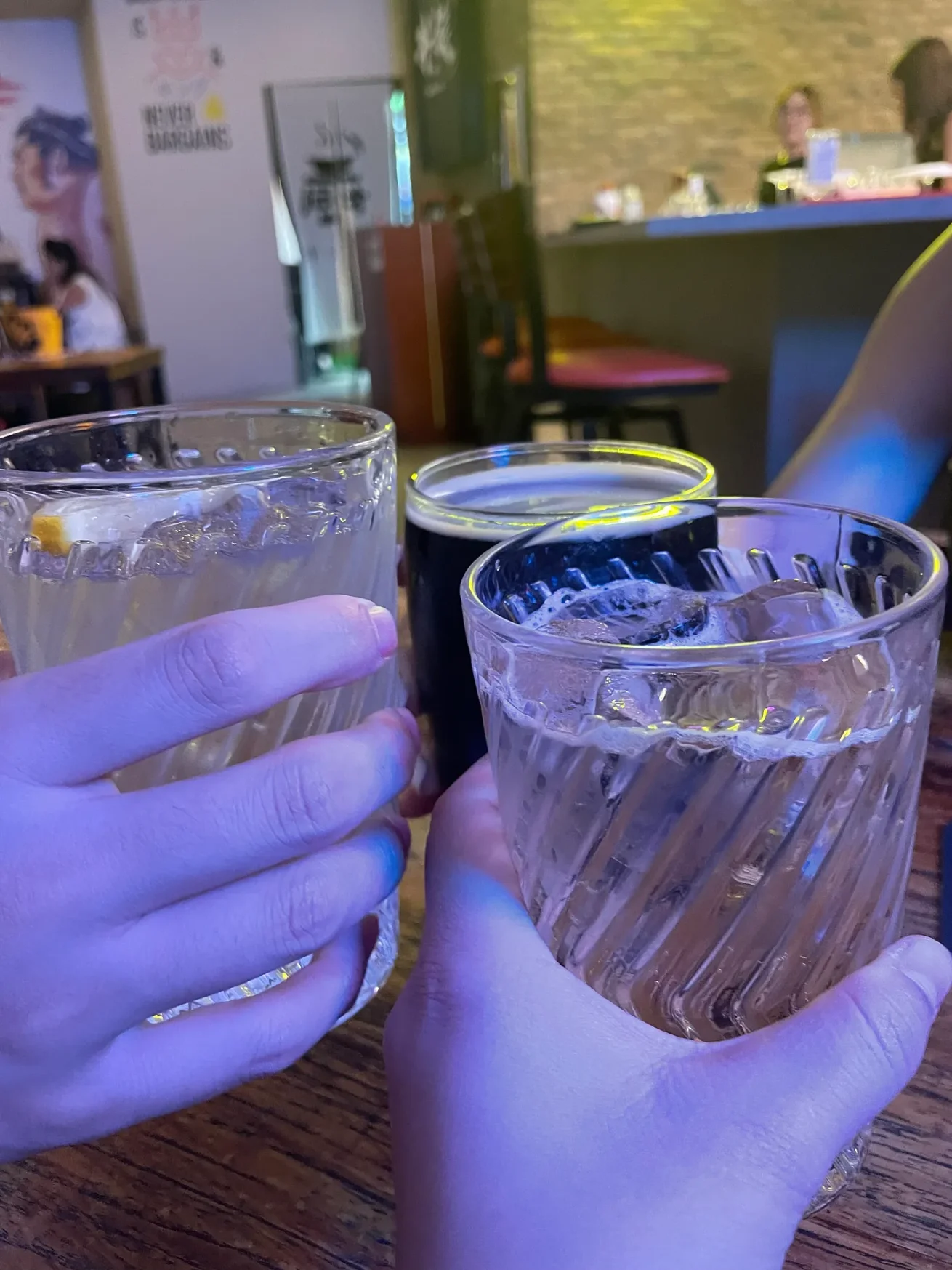
I met Teng Yan at the beginning of this year through X because he often writes NFT content on Twitter, and I caught up with him. He is a native Singaporean and is currently the team lead for NFT at Delphi Digital's research team. Due to remote work, his schedule is more aligned with US time, so we met for coffee in the afternoon and chatted about recent market views, the situation of local NFT players in Singapore, and so on.
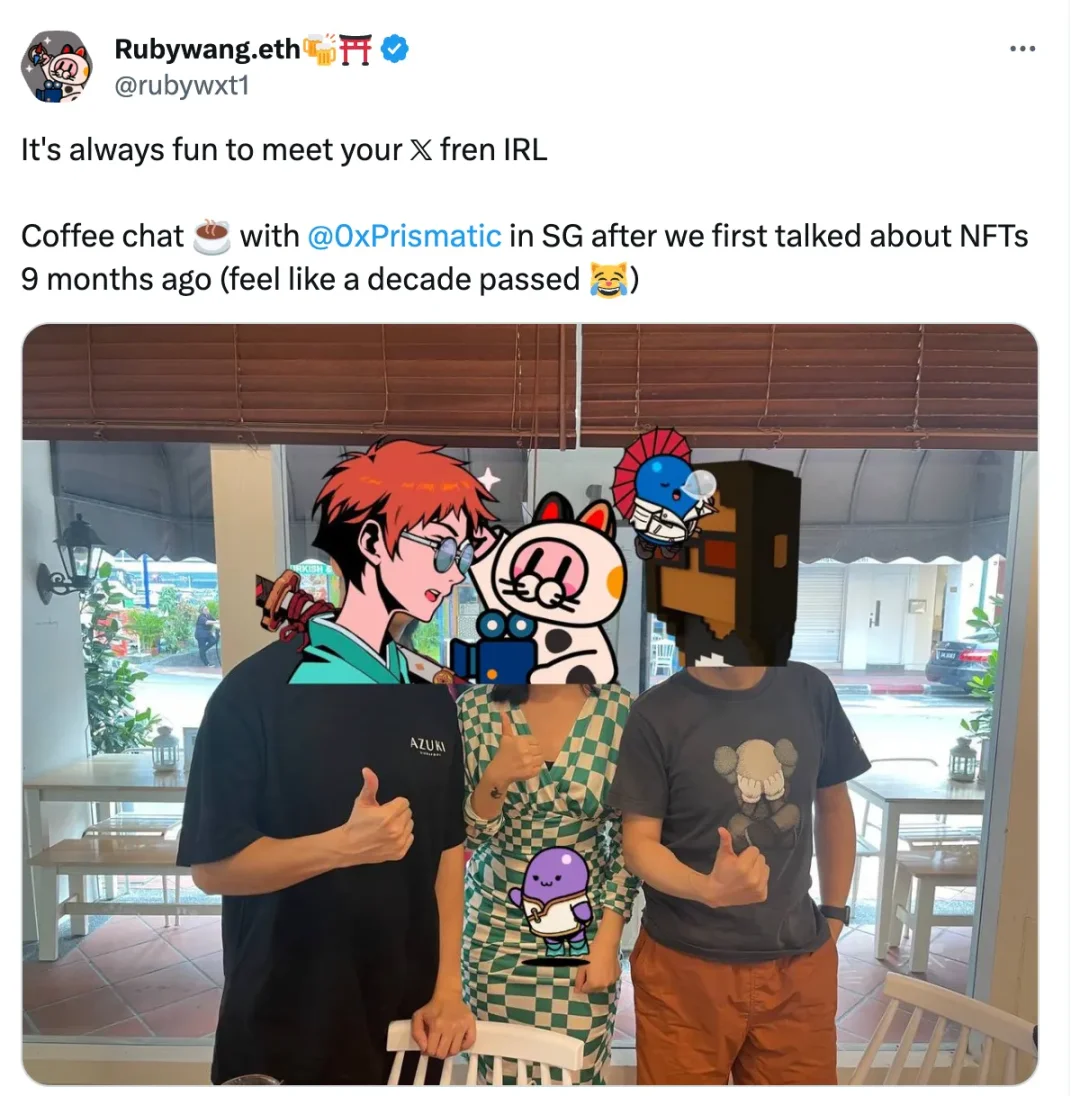
Sharing content can really create more connections, which is our biggest gain in 2023.
Bonus: Visiting International Schools (skip if you don't have children)
This time, I visited 4 international schools that offer excellent K-12 education, two with British-style systems and two with IB systems. Due to space constraints, not all readers may be interested in this content, so I won't bother you here. Friends who need it can chat with me individually.
- Kuala Lumpur: Alice Smith International School
- Kuala Lumpur: IGB International School
- Singapore: Tanglin Trust School
- Singapore: UWC Southeast Asia (Dover Campus)
Summary and Feelings
I deeply feel that the "affordable prices," "convenient living," and "abundant development opportunities" really form an impossible triangle.
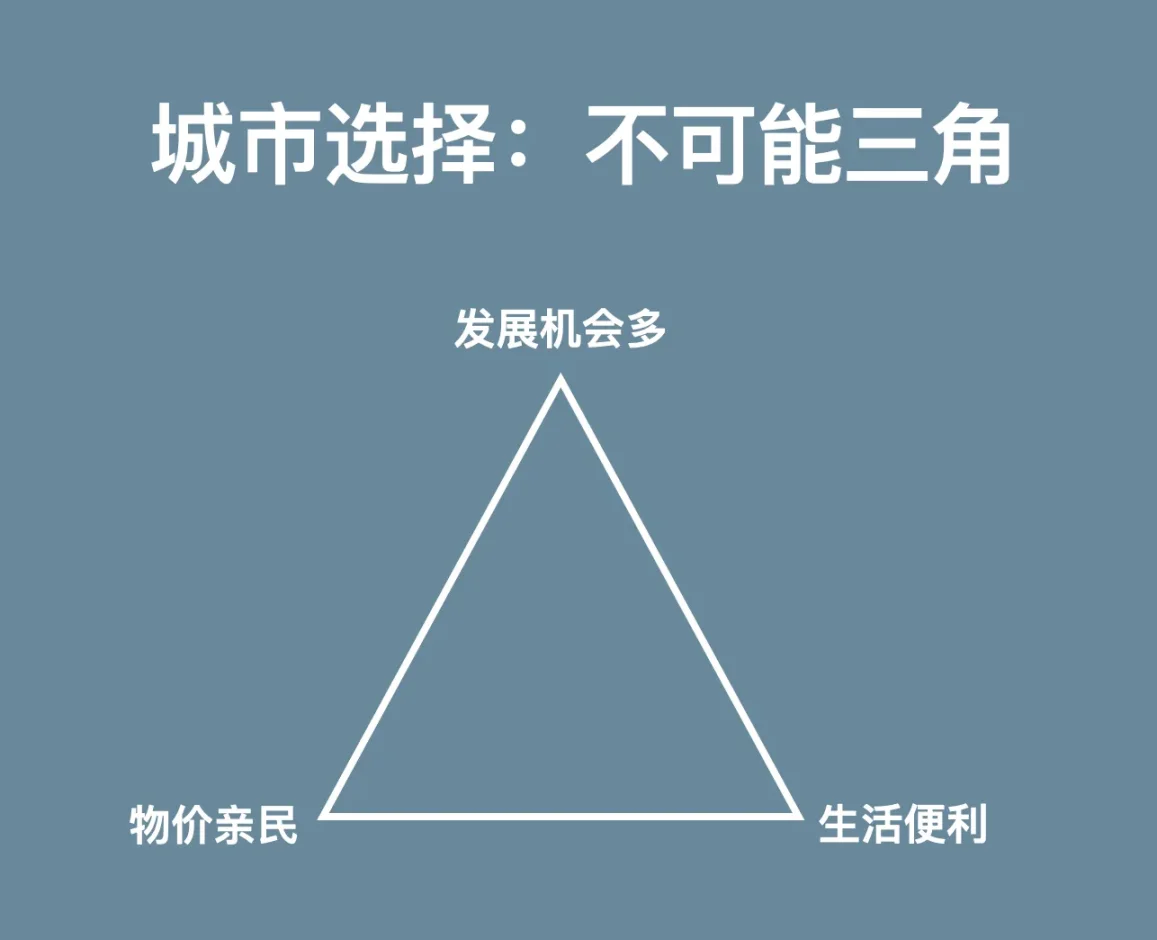
For example, in Singapore, in the current economic environment, there are relatively more job opportunities, whether it's Chinese companies going global or positions in the Asia-Pacific region for foreign companies. If your English is good enough, you can still get an EP, but the cost of living is really painful for all the families who have moved to Singapore in the past two years.
Many families who moved to Singapore have returned to their home countries or are planning to retire in other countries. The friends we know who are still there also admit that "it's too expensive." But why haven't they left? Because life is really convenient, and it's not far to fly around the world from the airport. Many people's solution is to take a vacation to a neighboring country every month to alleviate this boredom. In addition, for families with children, they came here for the good primary and secondary education, so most of them are not planning to leave.
Compared to Singapore, Kuala Lumpur, or even Tokyo, the cost of living is more affordable. My friend who has lived and worked in Tokyo for many years confidently said that with the same budget for food and clothing, what you can buy in Japan is not the cheapest, but it is definitely the best quality. Indeed, the yen has depreciated, and I feel that every meal in Japan is really worth it! The problem is that job opportunities in Japan are very limited, and even in foreign companies, salaries are almost not comparable to those in the domestic internet industry. Of course, if you are starting a business overseas or can find independent remote work, Malaysia and Japan are both good choices. Because it is very close to Singapore, some companies now base their employees in Johor Bahru or Kuala Lumpur in Malaysia to save costs. The commute from Johor Bahru to Singapore is only 1 hour (friends who have commuted long distances in Beijing think it's nothing!), and the flight from Kuala Lumpur to Singapore is only 1 hour, with dozens of flights every day, starting at 100 RMB, equivalent to a first-class seat on the high-speed train from Hangzhou to Shanghai. During the National Day holiday, the total cost of the tickets for our family of 4, including two large suitcases, was 1300 RMB.
In Singapore, after-tax income must be more than 1 million to have the same quality of life as in a first-tier or quasi-first-tier city in China. It is difficult to find a job in Kuala Lumpur, and if you can have passive income or remote work income of 300,000 to 500,000, you can have a similar standard of living.
At the end of the article, I have attached an estimated annual family expenditure, not providing advice, for reference only!
So, do you have a clear conclusion? Or should we go back to your income and work mode? 😄
Finally, some unexpected facts
Hmm, after this trip, some strange pieces of knowledge have been added 🤔
- Although many people's impression of Singapore is that it's expensive, in reality, locals can really afford it! The prices of ancestral homes are affordable (a 3-bedroom near the subway can be bought for 4-5 million RMB), the down payment ratio is low, and foreign companies are constantly coming in and must provide local job opportunities. Singapore's government is really clever.
- It should be very difficult to popularize electric cars in Malaysia because the fuel is super cheap, only about 1/3 of the price in China.
- Kuala Lumpur and Singapore have a year-round temperature of 20 to over 30 degrees, and this kind of climate really makes it easy to forget the time. For example, thinking back to the Spring Festival, oh, is it still summer?
- The dishes you can eat in Singapore (Peranakan cuisine, Indian cuisine, Chinese cuisine) can basically be found in Kuala Lumpur, at about one-third of the price. So, I'm more open to ordering chili crab in Malaysia 😁
- You can easily use Grab for transportation in both places, and the probability of the driver speaking Chinese is about 50%, so the elderly can feel quite at ease. One evening in Singapore, when we took a taxi from Marina Bay to the Technology City, the driver emphasized several times, "The place you want to go is really far," but I looked and it was only a 20-minute drive…
- Durian, you can eat as much as you want, the key is that you dare not eat too much!
- The resources for Chinese and various other subjects, as well as extracurricular classes in art, in Singapore and Malaysia are really abundant, so parents who are anxious about their children's Chinese can relax a bit.
- International schools in Singapore and Malaysia generally offer second and even third languages. But friends advise not to choose Chinese. On the one hand, the level of Chinese here can only be described as "passable," and the requirement for high school graduation is a 200-character essay. On the other hand, if the family's mother tongue is Chinese, the school will consider it as "slacking off." More than one friend told us that it's difficult to excel in both languages, so if you have higher requirements for Chinese, it's better to figure out a way yourself (send them back to China during the summer vacation?).
- In Singapore and Malaysia, I hardly encountered any mosquitoes in 10 days. How do they do that?
- Hellobike (Halo bike) can be paid for with Alipay in Singapore, and the price is about the same as in China, but the unit of measurement is in Singapore dollars.
- The penetration rate of Alipay in Singapore is not as good as in Kuala Lumpur, and many places cannot accept it. Friends from Ant Group can explain more about this.
- The tea drink brands HEYTEA and Xing Fu Tang are everywhere in the stations, airports, and malls, especially Xing Fu Tang, which I saw in three large malls in Kuala Lumpur with queues (HEYTEA: Am I falling behind?)
- You can order takeout Chinese food anywhere to ease your homesickness. Below is a screenshot of me ordering late-night takeout near KLCC using Grab.
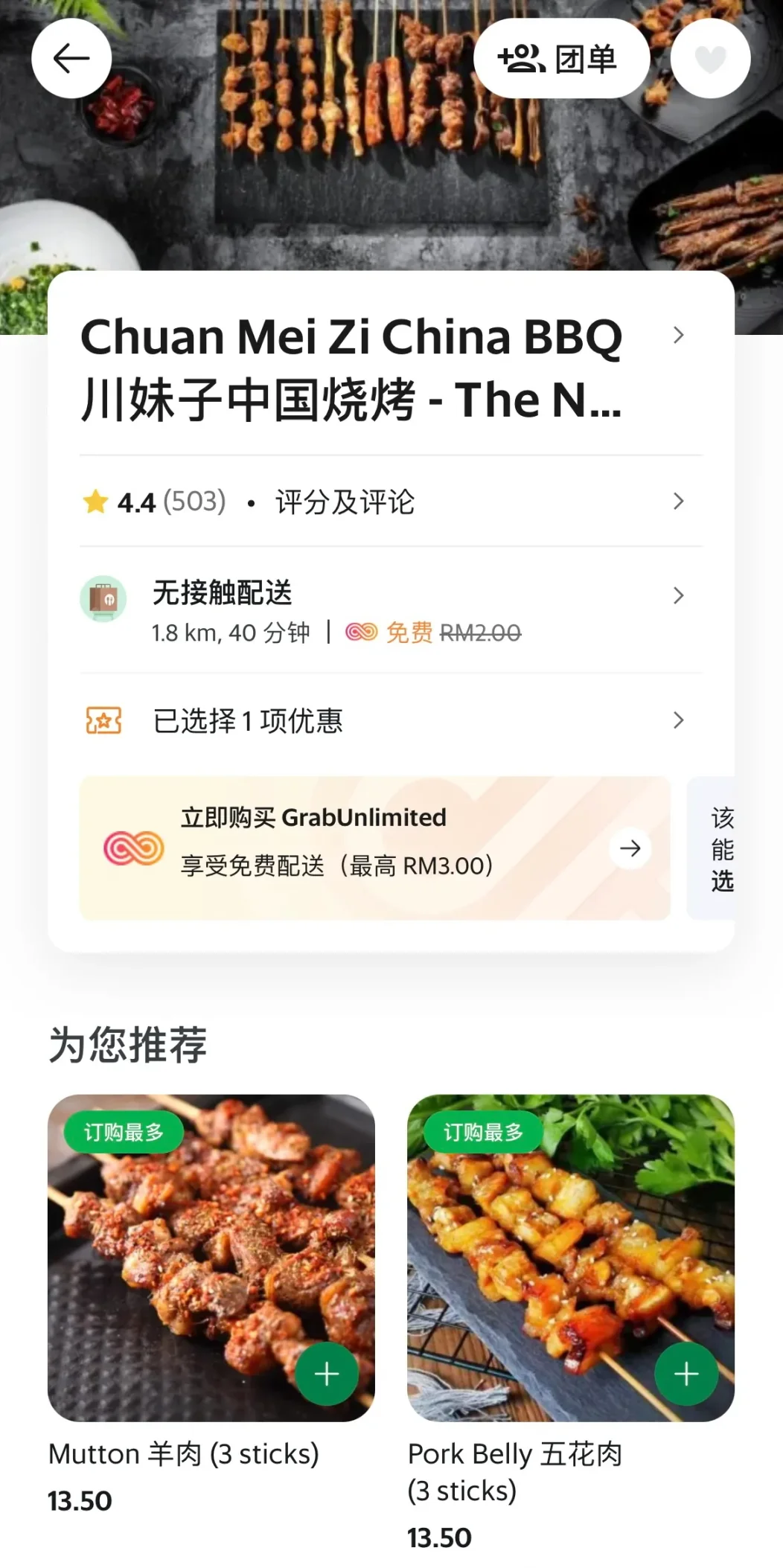
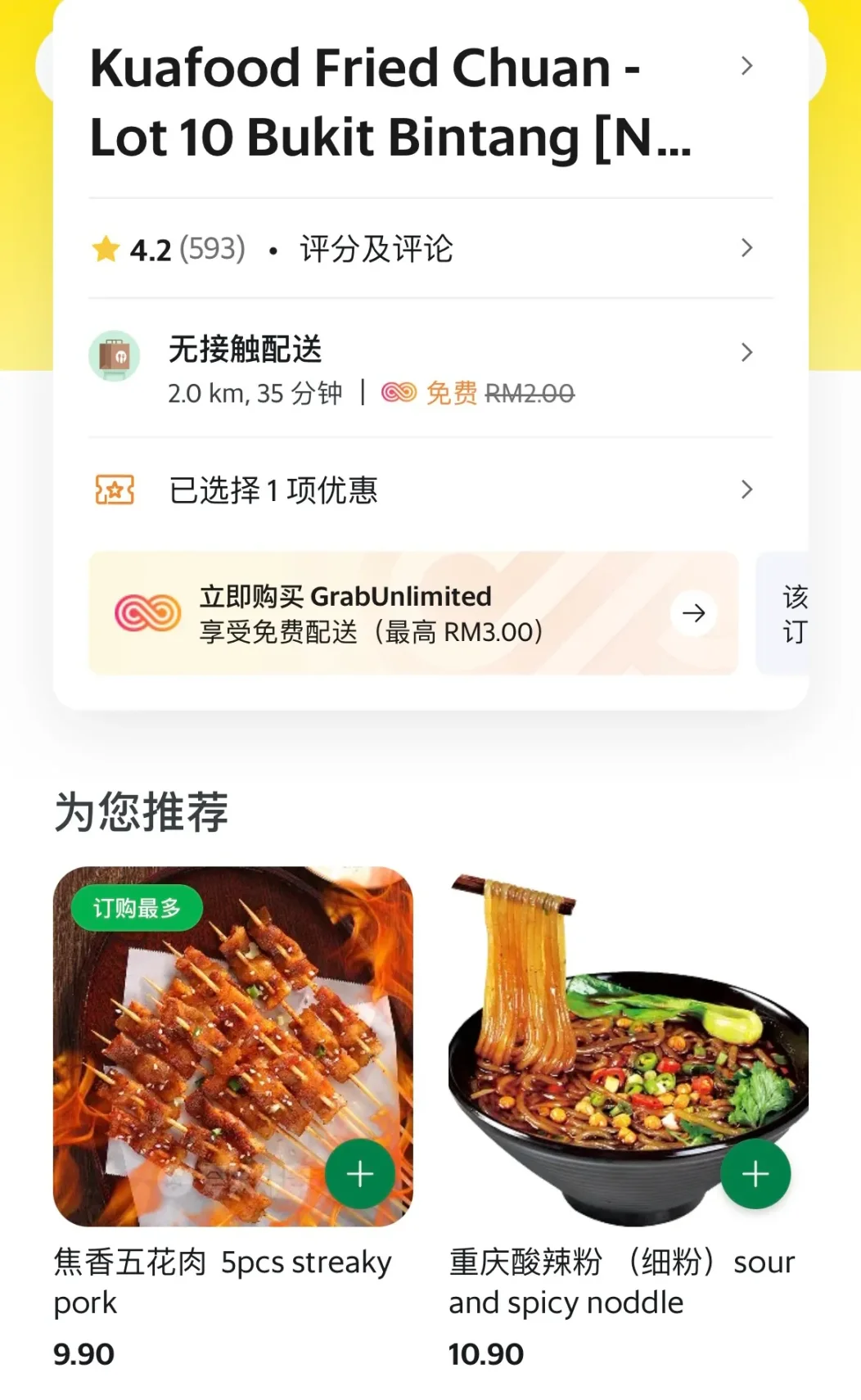
- Finally, did you know that the world's largest chain of spicy hot pot "Yang Guofu" has opened its 6000th store in Kuala Lumpur?

Appendix:
Below is a list of the cost of living for a family of three, as an example, before moving, for reference:
Singapore (exchange rate 5.3)
- Rent for a 3-bedroom apartment: 7000-8000 SGD per month, ancestral home: 4000-5000 SGD per month
- Maid to take care of children: 700 SGD per month
- International school: 40,000-50,000 SGD, extracurricular classes & school bus: 5000-10,000 SGD per year
- Food and clothing: 6000-7000 SGD per month
- Transportation: at least 500-1000 SGD per month
- Estimated annual expenses (RMB): 950,000 - 1,380,000
Kuala Lumpur (exchange rate already converted)
- Rent for a 3-bedroom apartment: 7000-10,000 RMB per month
- International school: 150,000-200,000 RMB, extracurricular classes: 10,000-20,000 RMB per year
- Food and clothing: 5000-10,000 RMB per month
- Transportation: driving is very cheap, 500 RMB per month
- Estimated annual expenses (RMB): 320,000 - 500,000 (or in other words, the feeling of spending 500,000 is better than 1,200,000 in Singapore)
The above does not consider medical care, insurance, and some vacation expenses, and the cost will vary greatly depending on the choice of institution.
免责声明:本文章仅代表作者个人观点,不代表本平台的立场和观点。本文章仅供信息分享,不构成对任何人的任何投资建议。用户与作者之间的任何争议,与本平台无关。如网页中刊载的文章或图片涉及侵权,请提供相关的权利证明和身份证明发送邮件到support@aicoin.com,本平台相关工作人员将会进行核查。




